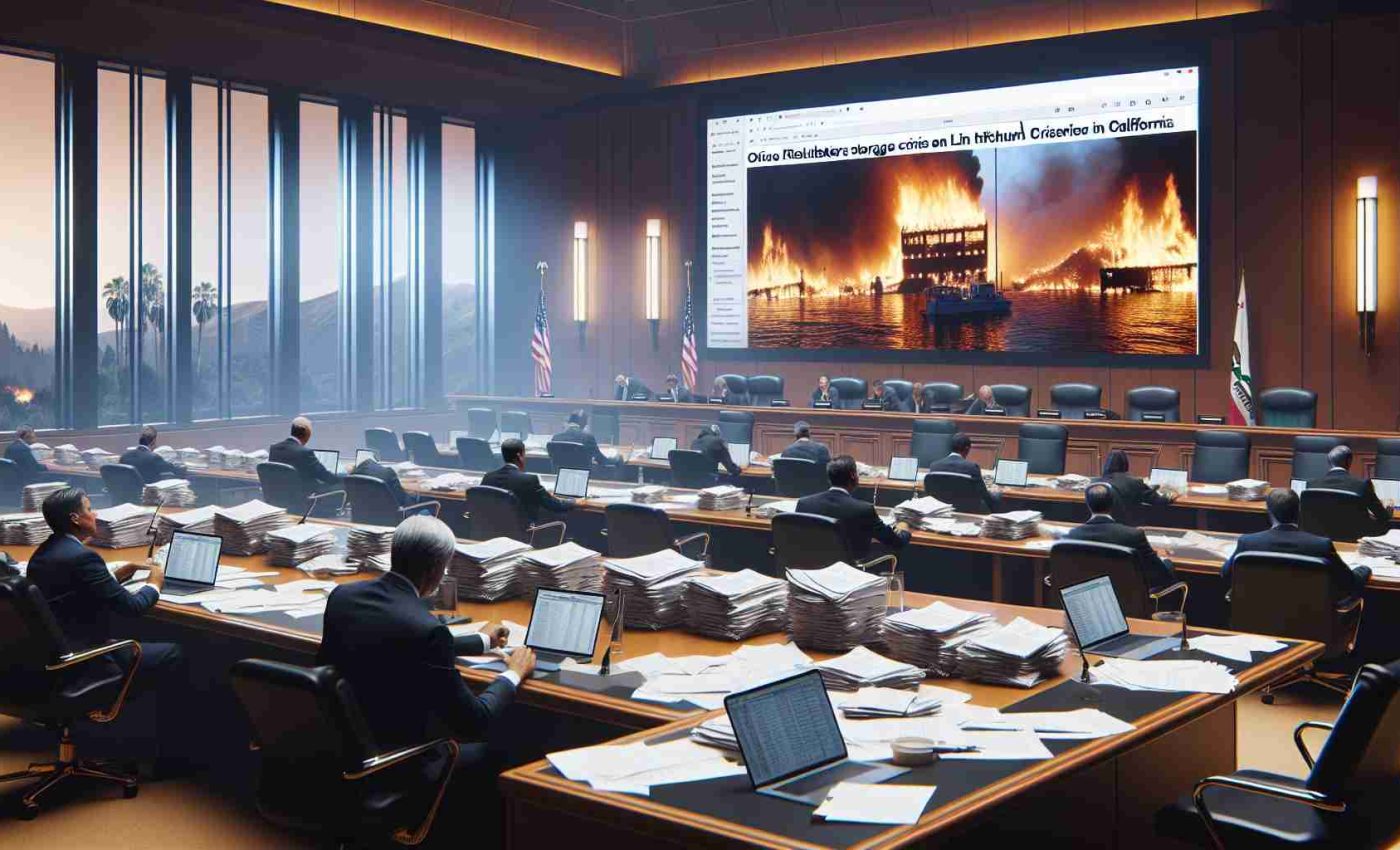FREYR Battery has cancelled its $2.6 billion battery factory project in Georgia, originally expected to create over 700 jobs. The decision was influenced by rising interest rates, a steep drop in battery prices, and changes in company leadership. FREYR plans to sell the 368-acre factory site for $50 million, with the sale expected to close by mid-February. The company is shifting focus from battery production to solar energy, acquiring a 5-gigawatt solar panel factory in Texas. FREYR’s global headquarters is relocating to Austin, aiming to strengthen its presence in the U.S. solar market. This transition highlights the need for adaptability in the evolving renewable energy sector.In a shocking twist for the renewable energy sector, **FREYR Battery**, the formerl...
Read MoreCategory: Uncategorized
Masdar is constructing the largest solar-plus-battery plant, set to start operations in 2027. The facility will generate 24/7 baseload power, dispelling myths about solar and wind reliability. Located in the Middle East, it will have a capacity of 5.2 GW and 19 GWh of battery storage. Expected annual reduction of 5.7 million tons of CO2, equivalent to planting 100 million trees. The UAE aims for 50% of electricity from clean sources by 2050, with Masdar leading innovation. Masdar plans to expand its renewable portfolio to 100 GW by 2030, showcasing the potential of oil-rich nations in the transition to sustainability.In a bold move to reshape the renewable energy landscape, Masdar is set to construct the **largest solar-plus-battery plant** on the planet, challe...
Read MoreThe U.S. wind industry faces challenges due to policies favoring fossil fuels during the Trump administration. Investors have shown hesitation in green energy initiatives amidst aggressive anti-renewable campaigns. Despite setbacks, industry leaders like Iberdrola are optimistic about an inevitable shift towards renewable energy. Progress is being made with existing offshore wind projects, signaling resilience in the sector. The transition to sustainable energy continues to be driven by increasing demand and innovation. Overall, the U.S. wind industry is navigating towards a sustainable future, despite political and financial obstacles.Despite the thunderous roar of fossil fuels echoing from the Trump administration, a brighter future for renewable energy glimme...
Read MoreTrump's call to stop state spending on EV charging infrastructure raises concerns among supporters and industry experts. Funding for EV chargers is criticized by Trump’s administration as a misuse of taxpayer money, sparking debate over its necessity. The halt in development could hinder the progress of electric vehicle adoption, especially in underserved rural areas. States that received federal funding face uncertainty and potential project delays due to shifting guidance. Despite political shifts, private investment is expected to remain strong, with firms like Tesla leading the way in expanding charging networks. Demand for electric vehicles continues to grow, suggesting resilience in the face of political challenges.In a bold maneuver, former President Dona...
Read MoreClimate change is severely impacting hydropower, the leading source of renewable energy. Regions experiencing droughts, like China and Ecuador, face significant decreases in hydropower production. Power shortages from diminished water supplies are leading to costly blackouts, such as Ecuador’s $12 million loss per hour in widespread outages. Environmental concerns are driving a decline in investment for new hydropower projects, highlighting the need for sustainable practices. Major projects, like the Grand Inga dam, face challenges from bureaucratic hurdles and financial constraints. The future of hydropower will rely on technological innovation and collaborative efforts to balance energy needs with environmental protection.As climate change shifts global weather patterns, ...
Read MoreCal State LA and RockeTruck, Inc. are developing a portable fuel cell generator to enhance emergency power solutions. Funded by a $345,000 U.S. Department of Energy grant, the project focuses on creating the Mobile Fuel Cell Generator (MFCG). The MFCG will utilize hydrogen to produce clean electricity, starting with a prototype that generates 80 kilowatts. A smaller version, the MFCG Mini, will be designed for truck-bed compatibility, integrating advanced battery technology. This initiative aims to maintain essential services during power outages, particularly during emergencies like wildfires. David Blekhman emphasizes the project's potential to uplift disadvantaged communities, especially in East Los Angeles. The partnership seeks to foster technological inno...
Read MoreWashington state faces a $156 million funding blockade for solar energy initiatives due to federal actions. Funding was part of the Solar for All program, aimed at providing solar access to over 900,000 households nationally. The Trump administration's freeze on clean energy grants has halted significant state solar projects. Washington state recently withdrew only $110,000 from the affected Solar for All account. Former Governor Jay Inslee viewed the initial funding as a pivotal opportunity for solar energy leadership. Uncertainty looms for low-income families hoping for solar energy solutions amidst the funding freeze. Renewable energy investment remains crucial for both environmental sustainability and community development.In a surprising turn of events,...
Read MoreFlorida's SB 462 proposal collects funds from public EV charging to enhance infrastructure. Starting October 2025, 6 cents per kilowatt-hour at 11,200 stations could generate $4 million annually. This funding model helps avoid new taxes on electric vehicles. The initiative aims for improved road infrastructure to accommodate nearly 168,000 registered EVs. Plans include more public charging options, with stations located every 40 miles. The funding initiative is set to sunset in 2030, prompting urgent legislative action. The proposal supports a greener future and enhances connectivity for all Floridians.Florida is gearing up for a *transformative shift* in how it funds critical infrastructure projects—thanks to electric vehicles. A bold proposal from Republic...
Read MoreA four-day fire at Vistra Energy’s lithium battery facility forced the evacuation of 1,200 residents. Alarming levels of toxic metals were found in nearby soils, raising health and agricultural concerns. The U.S. EPA stated there is no immediate danger, yet calls for a thorough investigation are increasing. Proposed legislation aims to shift permitting authority for battery storage plants to local governments for better oversight. The incident underscores the need for robust safety measures in the growing lithium battery industry. Over 25,000 lithium-ion battery fires have been reported in the U.S. in five years, highlighting significant safety risks.A *massive fire* erupted at Vistra Energy’s lithium battery storage facility in Moss Landing, California, lasting an astonish...
Read MoreAssemblymember Dawn Addis introduces legislation AB 303 to enhance local control over lithium battery storage permitting. The bill addresses safety concerns by establishing a minimum distance of 3,200 feet from sensitive areas such as schools and homes. Critics are calling for stricter oversight and an independent investigation into the causes of recent incidents at the Moss Landing facility. Community members express concerns regarding safety and advocate for more stringent regulations in the lithium battery industry. There is a strong emphasis on preventive measures, highlighting that investing in safety is more cost-effective than emergency responses. The community seeks accountability and improved safety standards as California pursues its renewable energy goal...
Read More







